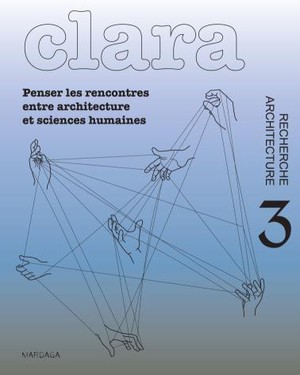Travellings - Getting a grip on material trajectories
Main Article Content
Abstract
Traced through all the transformations that affect them - in the manner of a cinematographic tracking shot or a meticulous investigation - the trajectories of building materials reveal the various demands placed on the circuits of the material economy. Over and above the production processes that give them form, materials undergo legal, commercial and normative formatting in order to meet the expectations that their use implies. While the resources of ethnographic surveys make it possible to describe such trajectories and account for these various requirements, such an approach also sheds light on the roles that designers play and could play within such trajectories. It is this general question that drives the present article. It is structured around a very specific case, that of concrete aggregates, and thus reveals, in its very elaboration, but also in the programmatic perspectives it outlines, the modalities of a very specific crossroads between architecture and the human sciences.
Article Details

This work is licensed under a Creative Commons Attribution-NonCommercial-NoDerivatives 4.0 International License.
References
Règlement (UE) n° 305/2011 du Parlement européen et du Conseil du 9 mars 2011 établissant les conditions harmonisées de commercialisation pour les produits de construction et abrogeant la directive 89/106/CEE du Conseil, Journal officiel de l’Union européenne, p. L88/5-L88/43.
CALLON, M. 1986. « Some elements of a sociology of translation: domestication of the scallops and the fishermen of St Brieux Bay », dans J. Law (ed.), Power, Action and Belief : a New Sociology of Knowledge ?, Londres, Routledge, p. 196-223.
DIDELON,V. 2010. « Retour à la pierre », Criticat, n° 6, p. 4-17.
FERRO, S. 2005. Dessin/chantier, Paris, Éditions de LaVillette.
HOUDART, S. ; THIERY, O. 2011. Humains, non humains : comment repeupler les sciences sociales, Paris, La Découverte.
JONES, D. ; WOMACK, J. (1996) 2007. Système lean. Penser l’entreprise au plus juste, Paris, Pearsons Education France.
LATOUR, B. 2012. Enquêtes sur les modes d’existence : une anthropologie des Modernes, Paris, La Découverte.
LATOUR, B. (2005) 2007. Reassembling the Social : an Introduction to Actor- Network-Theory, Oxford University Press.
LAW, J. ; HASSARD, J. 1999. Actor Network Theory and After, Oxford (UK), Malden (USA), Wiley-Blackwell.
MARCOM, A. 2011. Construire en terre-paille, Mens, Terrevivante.
MARX, K. (1867) 1949. Le capital, Paris, Alfred Costes éditeur.
NUSSAUME,Y. ; DIDELON,V. 2012. Gilles Perraudin, Dijon, Les Presses du Réel.
SIMONS, B. ; VYNCKE J. 1993. « Les déchets de construction et de démolition. Possibilité de recyclage sous forme de granulats dans le béton », CSTC magazine, n° 1, p. 32-41.
TSING, A. L., 2005. Friction : an Ethnography of Global Connection, Princeton (USA), Woodstock (UK), Princeton University Press.
WITH, É. 1870. Les machines : leur histoire, leur description, leurs usages, Paris, J. Baudry. En ligne sur le site de Gallica, bibliothèque numérique, Bibliothèque nationale de France. Consultable : http://gallica.bnf.fr/ [disponible le 11 décembre 2013].

